El despertar del pianista Carles Santos / The awakening of the pianist Carles Santos
A principios de 2016, el pianista Carles Santos y yo estábamos metidos en un proyecto en el que él debería poner música a un grupo de siete fotografías mías. Una vez seleccionadas las imágenes, Carles se quedó con una copia de cada en tamaño 40 x 40 cm, que usaba como partitura en sus ensayos.
At the beginning of 2016, the pianist Carles Santos and I were involved in a project in which he was to put music to a group of seven of my photographs. Of the images that were selected, Carles kept a 40 x 40 cm. copy of each photograph to use them as a score during his piano rehearsals.
sals.
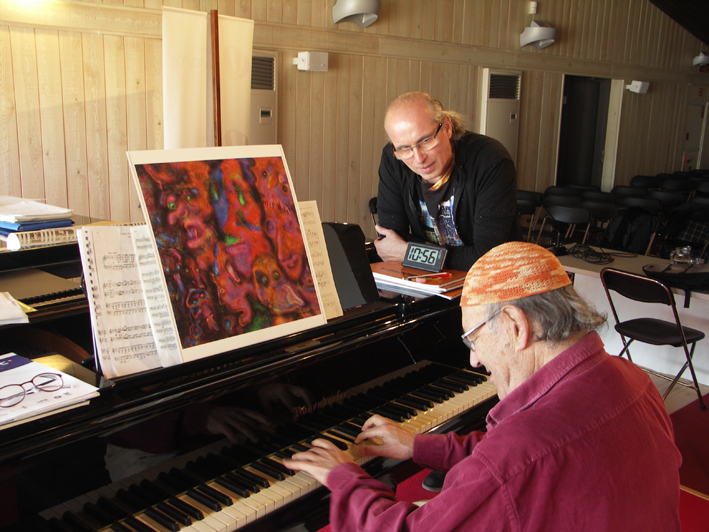
Generalmente Carles calentaba tocando a Bach y, sin previo aviso, saltaba a la composición que estaba preparando para la imagen que tenía delante como partitura. Decidimos grabar algunos momentos del proyecto para documentarlo y, de uno de nuestros primeros encuentros, se ha editado un corto video en el que se nos puede ver mientras se buscaban ideas al piano.
Usually, Carles liked to warm up first by playing Bach, all of a sudden, without further notice, he stopped playing Bach and jumped straight into the composition that he was preparing for the image that was placed in front of him, the image he used as the score for his inspiration. We decided to record some of those moments in order to keep the project documented, this took place during one of our first encounters. A short video has since been edited in which we are filmed while searching for ideas at the piano.
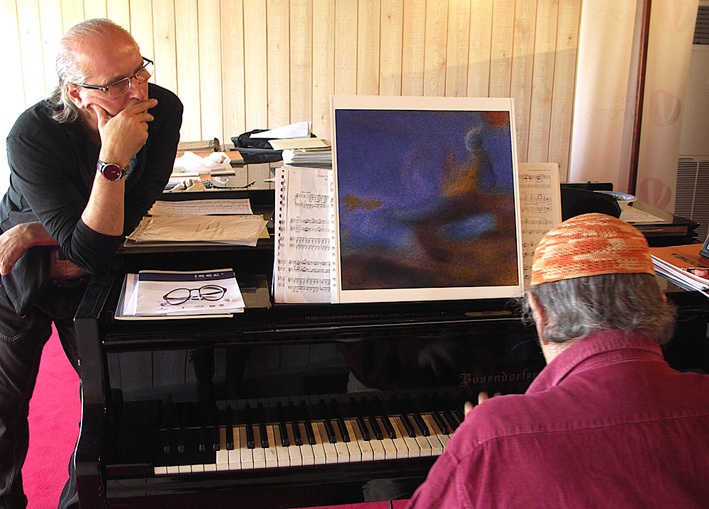
En mi opinión es un documento excepcional –diría que único–, en el que se puede ver a Carles concentrado, buscando armonías y disfrutando mientras toca su piano. La fuerza que le rodeaba impresionaba, era un genio. Yo conocía su música y compraba sus discos mucho antes de conocerle personalmente, allá por 2003, así que la posibilidad de hacer un proyecto juntos me llenó de ilusión. A pesar de las rarezas que se le achacan –como a todo genio–, conmigo siempre fue amable, agradable, didáctico y afectuoso. Guardo de nuestros encuentros el mejor recuerdo posible.
In my opinion, it is an extraordinary documentary –I would even say unique–. Carles can be seen in concentration, trying out harmonies and enjoying himself while playing them on the piano. The energy that surrounded him was impressive, he was a genius. I knew his music and bought his albums long before knowing him personally, back in 2003, so the possibility of doing a project together filled me with illusion. In spite of the rarities that impute him –as to every genius–, he was always nice, agreeable, didactic and affectionate with me. I have the very best memories of these meetings of ours.
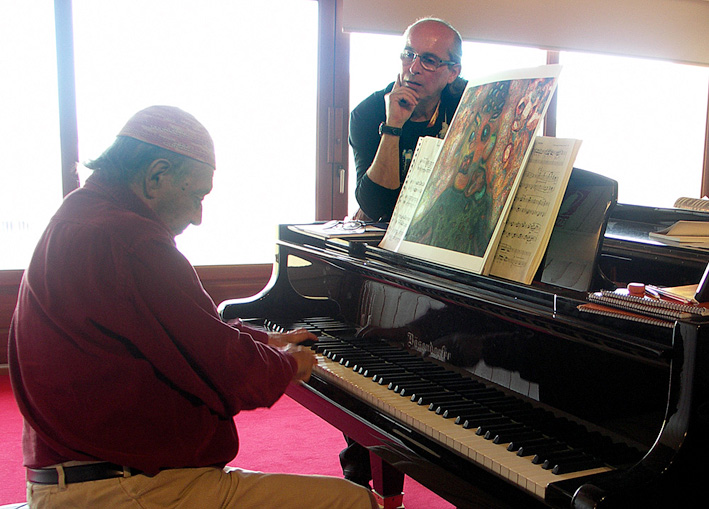
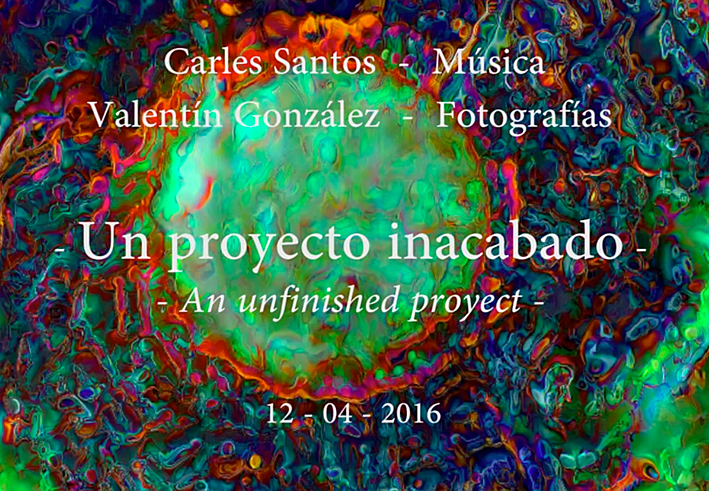 Link al video con texto en Español: https://youtu.be/8FVp5xwCCiU
Link al video con texto en Español: https://youtu.be/8FVp5xwCCiU
Link to the video with text in English: https://youtu.be/Dj_Yu1xrMpA
Durante el verano de 2016, poco después de comenzar con el proyecto, Carles Santos contó, durante una comida, una sorprendente historia sobre un atún que tiempo atrás había pescado, y que le seguía con la mirada por la cubierta del barco, haciéndole sentir su miedo a morir. El atún le hizo entender que estaba matando a un magnífico animal para su diversión. Esta historia y la interesante conversación que siguió fue, afortunadamente, grabada, solo el sonido, pero considero el documento como un tesoro.
During the summer of 2016, shortly after starting the project, during a meal, Carles Santos told a surprising story about a tuna that he had fished some time ago. The fish seemed to be following him with his eyes on the deck of the boat, making him feel the tuna’s fear of dying. This made him understand that he would be killing a magnificent animal just for his diversion. This story, and the interesting conversation that followed, was also recorded, on audio only, but I consider this record a treasure.
Como consecuencia de aquella circunstancia Carles dejó de pescar atunes.
As a consequence of that circumstance, Carles stopped fishing tunas.
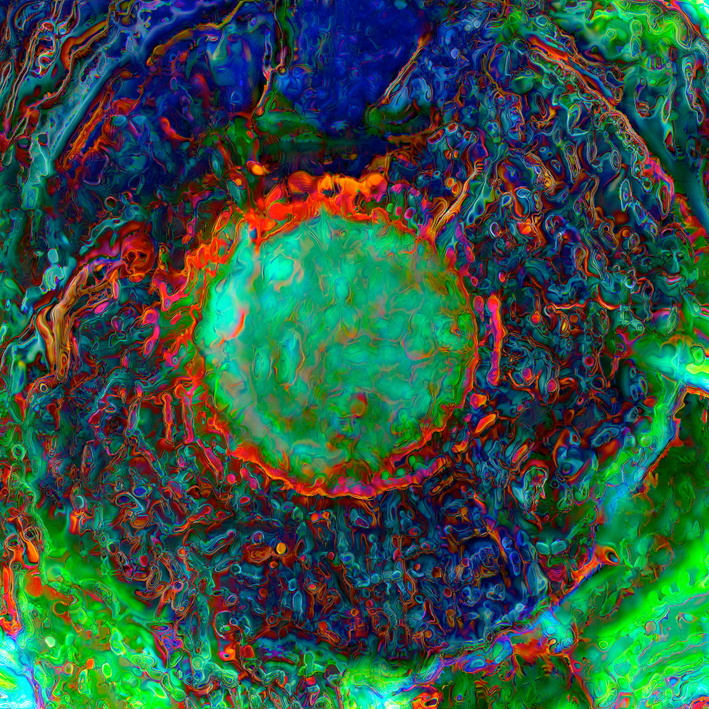 El ojo que despertó / The eye that woke up
El ojo que despertó / The eye that woke up
Mientras contaba su historia, me vino a la cabeza una fotografía desechada de la colección que estaba concluyendo en aquellos días, los “Somnios”. Me pareció que encajaba perfectamente con el relato y decidí darle vida.
De no ser por Carles y su atún, esta fotografía nunca se habría hecho. Hoy la considero una de las mejores de la colección y no puedo entender que la hubiera dejado de lado.
While he was relating his story, a photograph I had discarded from the collection the “Somnios” that I was doing at that time came to my mind. I thought it fitted in perfectly with the story and I decided to bring it to life.
If it wasn’t for Carles and his tuna fish, this photograph would never have seen the light. Today, I consider it one of the best of the collection and I just can’t understand why I would have left it aside.
Como anécdota diré que aunque le puse por título “El ojo que despertó”, haciendo referencia al despertar de la consciencia de Carles ante el “mensaje” del atún, casi todos los que conocen la historia se refieren a ella como “El ojo del pez”. (Tamaño real de la foto: 1 x 1 m.)
Si bien hay cientos de personajes que participan en la coreografía de la imagen, y que pueden entretener un buen rato mientras se intenta comprender el significado de los símbolos ocultos, quisiera explicar algunas de las curiosidades más esenciales de la obra, para permitir a los menos educados visualmente un acercamiento razonado a la misma.
As an anecdote, I’d like to mention that although I had titled it “The eye that woke up”, referring to the awakening of the consciousness of Carles before the «message» of the tuna, almost everyone who knows the story refers to it as «The eye of the fish». (Real size of the picture: 1×1 m.)
While there are hundreds of characters involved in the choreography of the image, and these can keep us entertained a long time while we try to understand the meaning of the hidden symbols, I would like to explain some of the most essential curiosities of the work, to allow the less visually educated a reasoned approach to it.
CURIOSIDADES / CURIOSITIES:
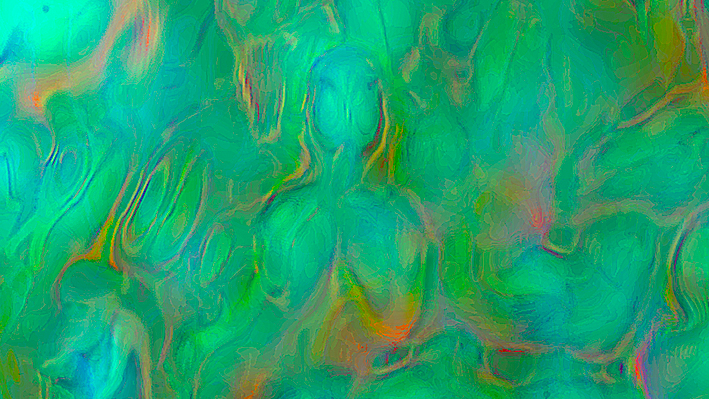 01.- En el centro del ojo, como reflejado en la cornea del atún, se ve una figura que simboliza a Carles mirando al pez y tratando de entender lo que está pasando.
01.- En el centro del ojo, como reflejado en la cornea del atún, se ve una figura que simboliza a Carles mirando al pez y tratando de entender lo que está pasando.
01.- In the center of the eye, as if reflected in the cornea of the tuna, you can see a figure that symbolizes Carles looking at the tuna and trying to understand what is going on.
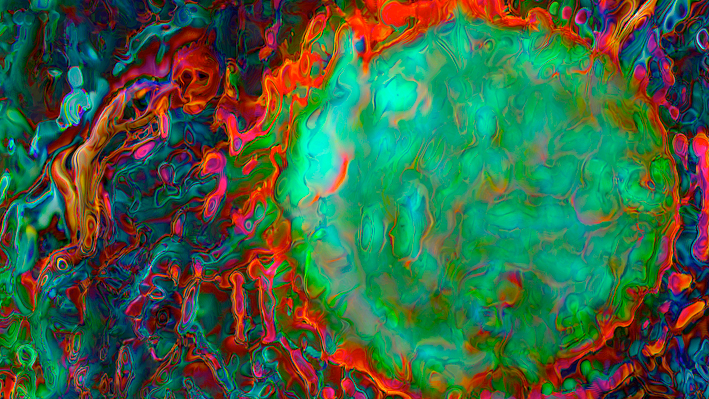 02.- Alrededor de Carles se amontonan vivencias extraídas de su propia memoria, de la del pez y de la mía. Destaca especialmente una figura rojiza a la izquierda, que representa el miedo que sentía el atún y que transmitió a Carles.
02.- Alrededor de Carles se amontonan vivencias extraídas de su propia memoria, de la del pez y de la mía. Destaca especialmente una figura rojiza a la izquierda, que representa el miedo que sentía el atún y que transmitió a Carles.
02.- All around Carles are accumulated experiences extracted from his own memory, from that of the fish and of my own memory. A reddish figure stands out on the left side which represents the fear that the tuna was feeling and was transmitted to Carles.
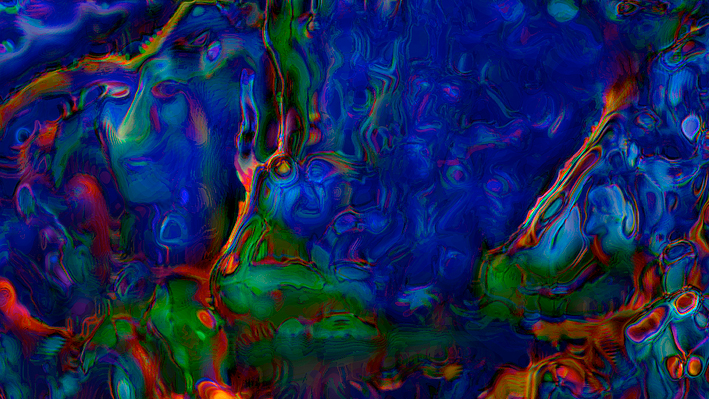 03.- Los diferentes espíritus del mar observaban la escena desde el profundo azul, sin recriminación alguna. Eran simples testigos de una extraña y metafísica experiencia de la que formaban parte.
03.- Los diferentes espíritus del mar observaban la escena desde el profundo azul, sin recriminación alguna. Eran simples testigos de una extraña y metafísica experiencia de la que formaban parte.
03.- The different spirits of the sea were observing the scene from the deep blue. Without any recrimination, they were simple witnesses of a strange and metaphysical experience of which they were a part of.
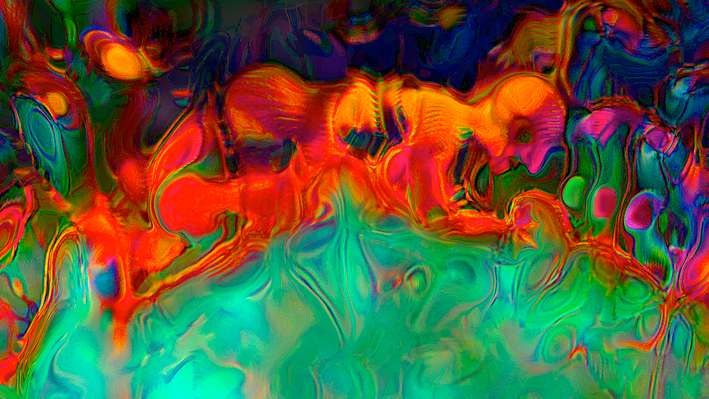 04.- Sobre la cornea, como figuras rojas, se ve el pensamiento de Carles en ese momento. Se inclina a mirar de cerca al atún y comprende lo que significa “existir”.
04.- Sobre la cornea, como figuras rojas, se ve el pensamiento de Carles en ese momento. Se inclina a mirar de cerca al atún y comprende lo que significa “existir”.
04.- On the cornea, as red figures, one sees Carles’s thoughts at this moment. He leans over to look closely at the tuna and then understands what «to exist» really means.
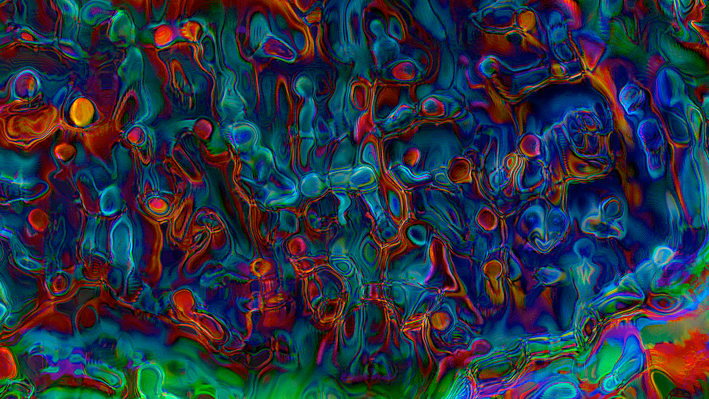 05.- El iris está lleno de personajes que el mismo Carles relacionó con hechos de su vida, pero que pueden formar parte de momentos de la de cualquier humano. Es la representación de lo universal de la existencia.
05.- El iris está lleno de personajes que el mismo Carles relacionó con hechos de su vida, pero que pueden formar parte de momentos de la de cualquier humano. Es la representación de lo universal de la existencia.
05.- The iris is full of prominent figures that Carles himself related to the facts of his own life, but can also form part of moments of the life of any human being. It is the representation of the universality of the existence.
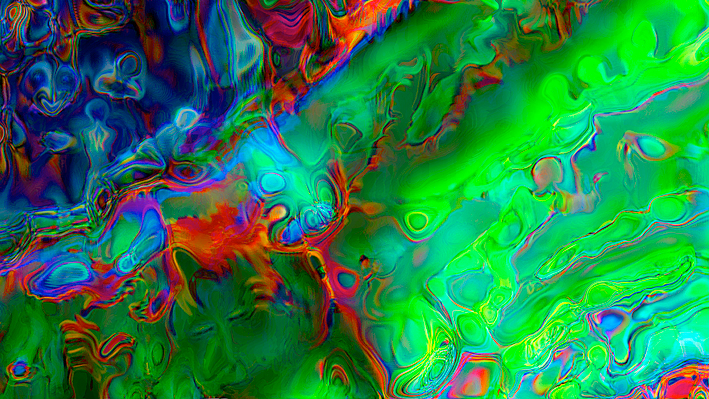 06.- Abajo a la izquierda se puede ver una imagen que representa a Carles quien, con los brazos levantados y los ojos entrecerrados, toca el piano con los puños. Inspirado por el atún se imagina un mar verde, brillante y luminoso, que da vida a todo lo que se sumerge en él.
06.- Abajo a la izquierda se puede ver una imagen que representa a Carles quien, con los brazos levantados y los ojos entrecerrados, toca el piano con los puños. Inspirado por el atún se imagina un mar verde, brillante y luminoso, que da vida a todo lo que se sumerge en él.
06.- Below on the left side, it is possible to see an image that represents Carles who, with his arms elevated and with half-closed eyes, plays the piano with his fists. Inspired by the tuna he imagines a green, brilliant and luminous sea, which gives life to everything that submerges in it.
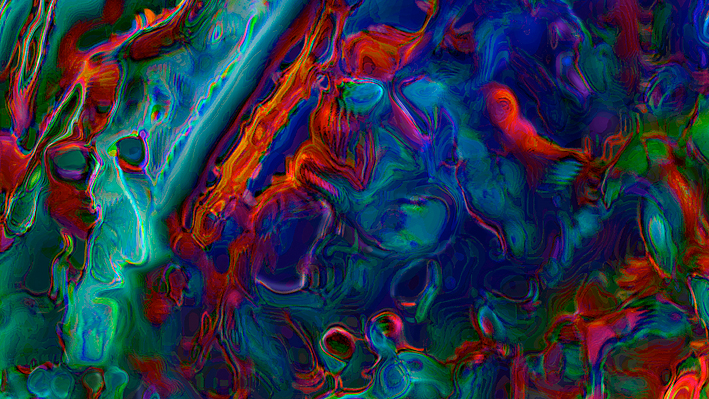 07.- A la izquierda, en un tono cian, mezcla de verde y azul, me encuentro yo, tratando de comprender el significado de lo relatado por Carles. Me siento atrapado por su historia y comienzo a darle forma, a la vez que paso a formar parte de ella.
07.- A la izquierda, en un tono cian, mezcla de verde y azul, me encuentro yo, tratando de comprender el significado de lo relatado por Carles. Me siento atrapado por su historia y comienzo a darle forma, a la vez que paso a formar parte de ella.
07.- To the left, in a cyan tone, a mix of green and blue, you can find the representation of myself, trying to understand the meaning of what Carles told us. I felt trapped by his story and started to give it shape while at the same time I myself became a part of it.
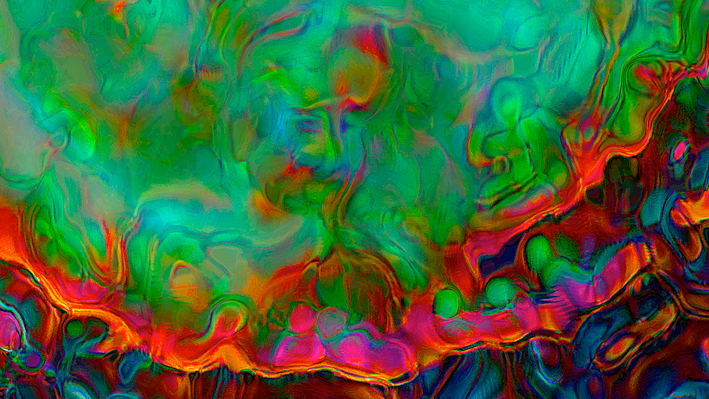 08.- En la parte baja de la cornea se ve un rostro que parece hablar a un grupo de espectadores situados en el borde de la misma. Representa a Carles contándonos, como desde una pantalla, la película de su experiencia, pero que transcurre toda a la vez, fijada sin tiempo en una sola imagen. Ahora los espectadores somos todos: la historia se ha escondido en nuestras cabezas.
08.- En la parte baja de la cornea se ve un rostro que parece hablar a un grupo de espectadores situados en el borde de la misma. Representa a Carles contándonos, como desde una pantalla, la película de su experiencia, pero que transcurre toda a la vez, fijada sin tiempo en una sola imagen. Ahora los espectadores somos todos: la historia se ha escondido en nuestras cabezas.
08.- In the lower part of the cornea, one sees a face that seems to be speaking to a group of spectators that are placed close to the edge. It represents Carles telling us, as if coming from a screen, the movie of his experience, but everything happens simultaneously, fixed without time in a single image. Now, we are all spectators: The story is hidden in our head.
Lamentablemente, el fallecimiento de Carles Santos en diciembre de 2017 dejó el proyecto inacabado, pero no huérfano. Todo lo que se hizo hasta ese momento está lleno de magia. Para mí eso es suficiente.
Regretfully, the death of Carles Santos in December 2017 left an unfinished project, but not orphan. Everything that was done up to that point is full of magic. For me, that is enough.
Las otras seis fotografías a las que Carles Santos estaba poniendo música:
The other six photographs to which Carles Santos was putting the music:
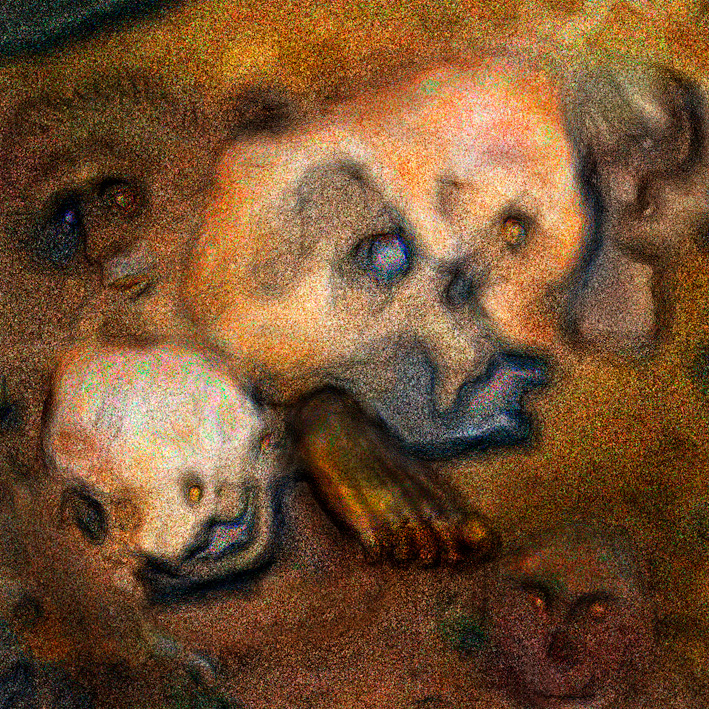 Pie de piedras, 2011.
Pie de piedras, 2011.
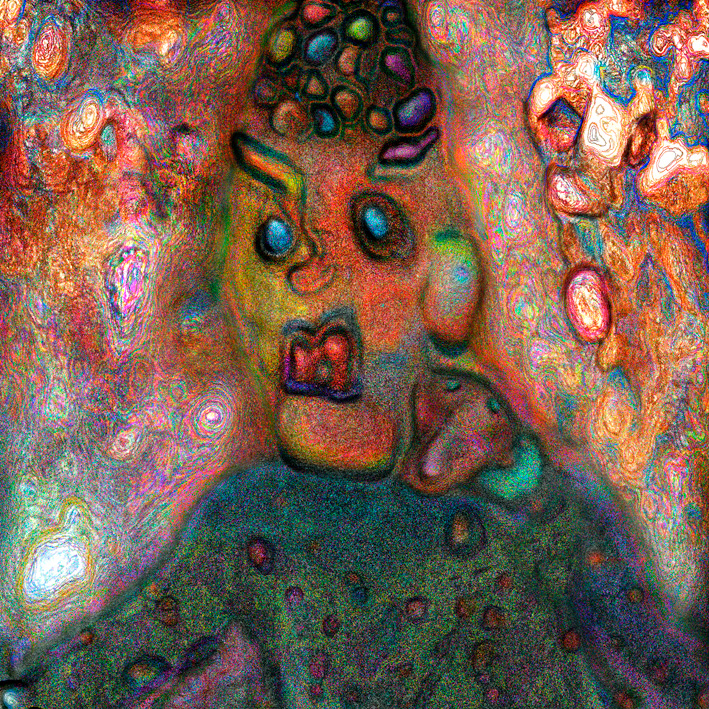 La marioneta, 2011.
La marioneta, 2011.
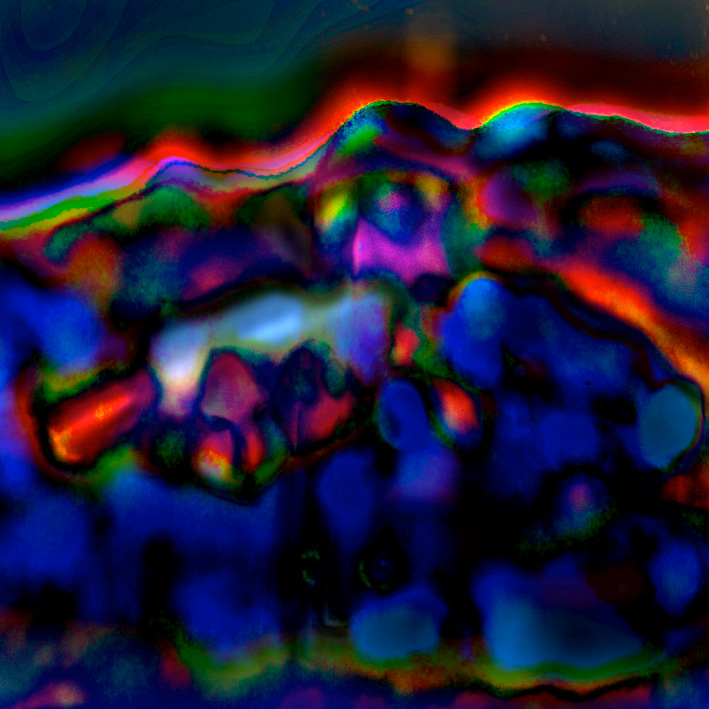 La maldición de la guerra, 2011.
La maldición de la guerra, 2011.
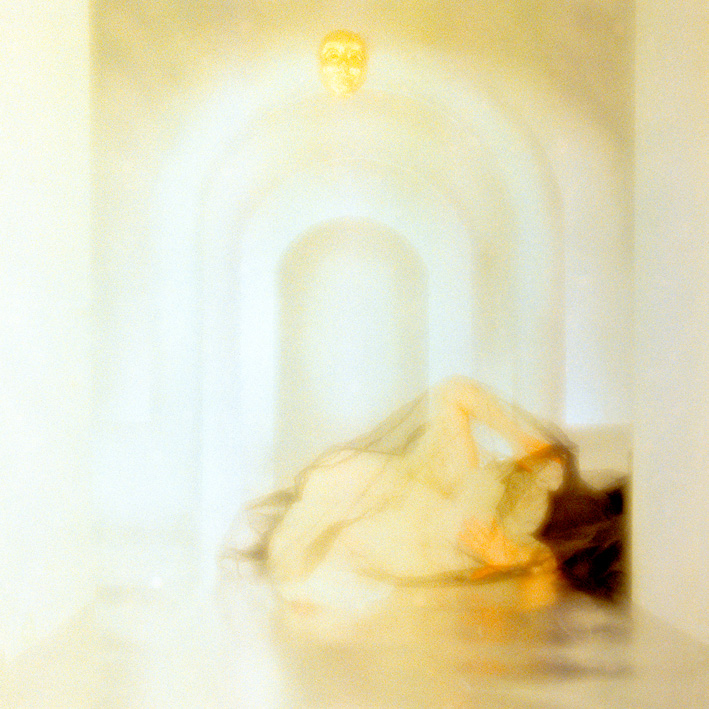 Hovoneonato, 1992.
Hovoneonato, 1992.
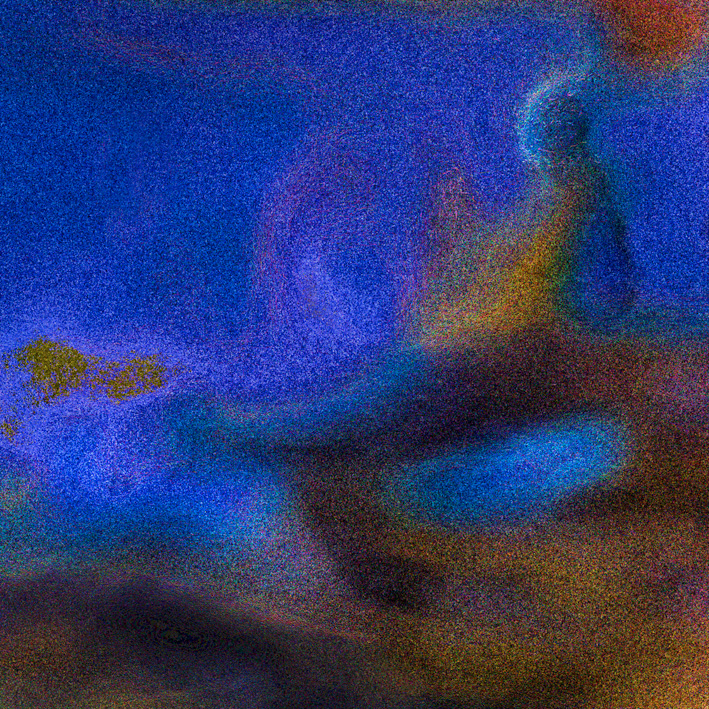
El hombre que se hizo mar, 2011.
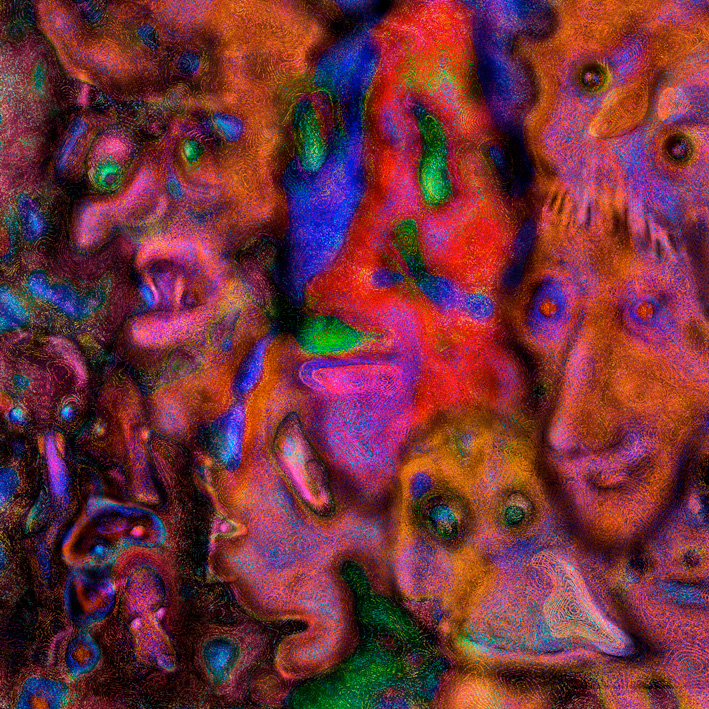 Animáticos, 2011.
Animáticos, 2011.
Translated to English by the one and only… Sandra Crundwell

